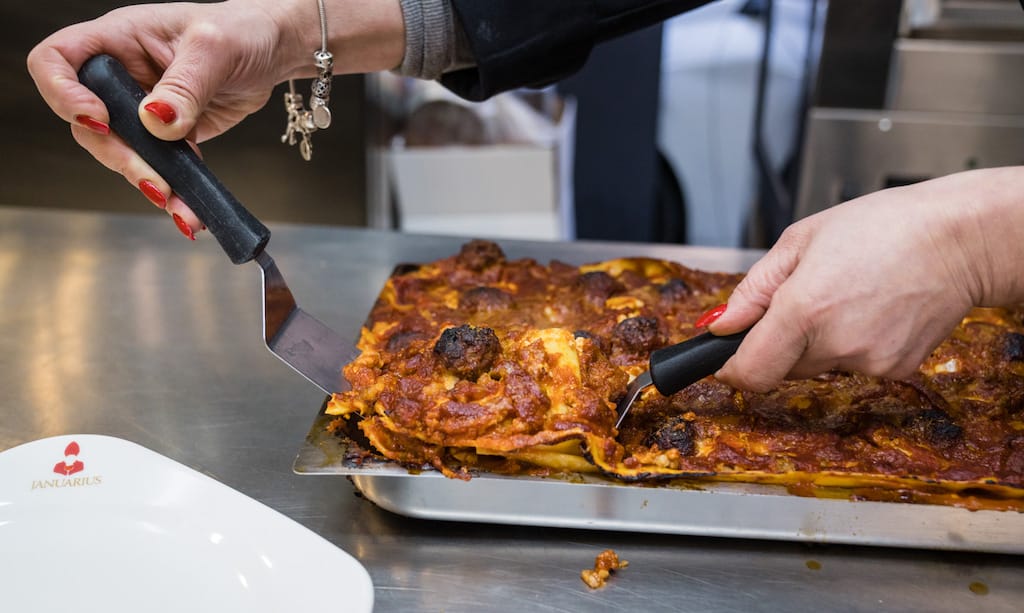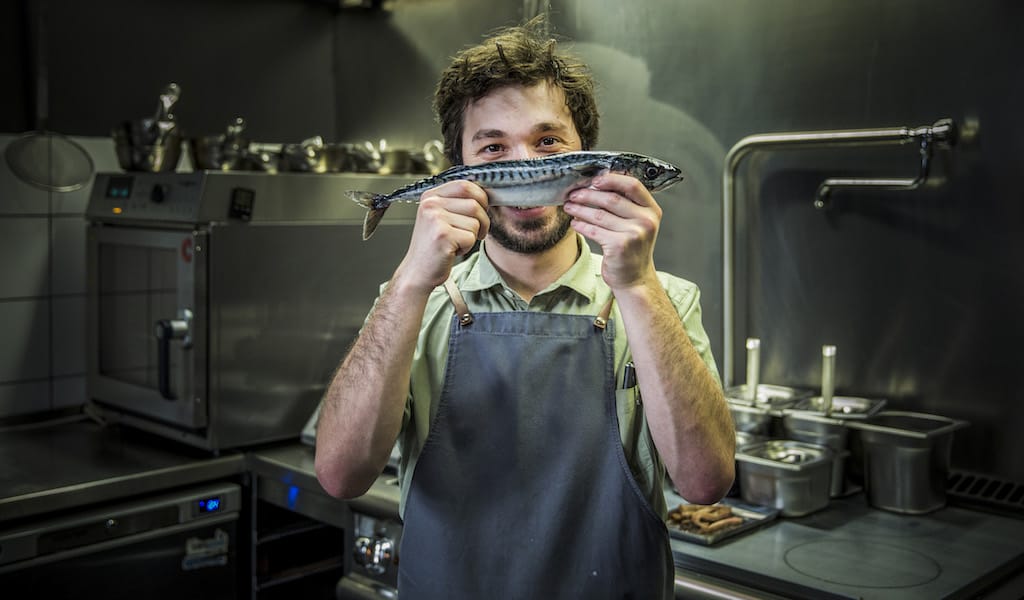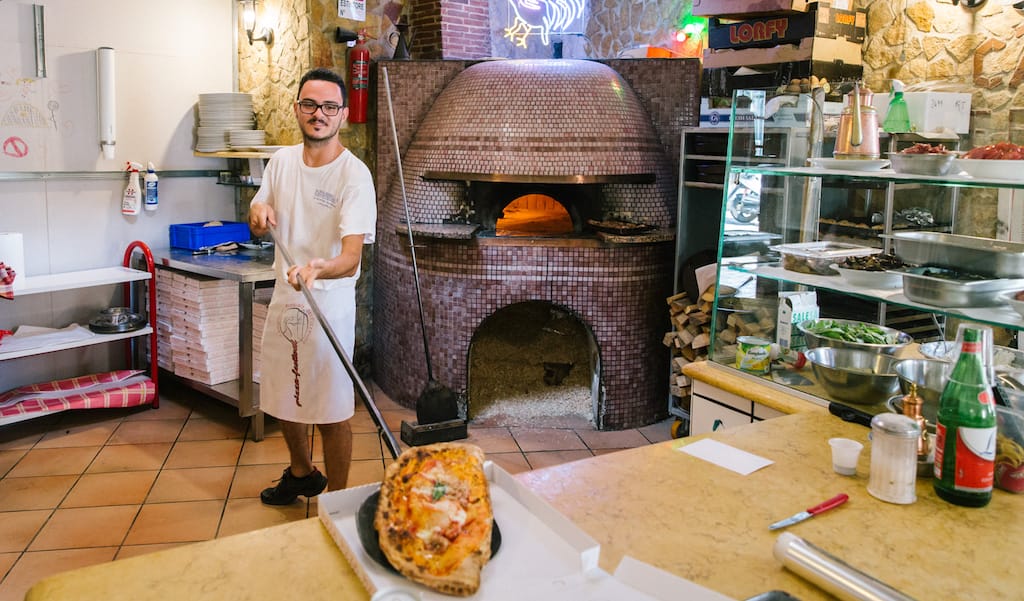Long before Halloween – nowadays a popular event marked by pumpkins and costumes here in Italy, too – arrived in Naples, we had Carnival. A mix of pagan and religious festivity, celebrated with exuberance and (mainly culinary) excess before Lent, it culminates with Mardi Gras, the Tuesday in February which falls six weeks before Easter. In Naples, Carnival used to imply embarrassing homemade costumes and the desperate effort to escape egg throwing in the streets on the way home from school – as well as much more pleasant rites, including the food-related ones. Which, luckily, still endure.
The widespread Italian habit of frying food for Carnival here takes the irregular, indented shape of chiacchiere – thin, crunchy fritters sprinkled with powdered sugar, which are also common in other regions of Italy but with different names – traditionally served with sanguinaccio, a decadent chocolate sauce originally made with pork’s blood, to honor the animal’s sacrifice. But a lesser-known local tradition exists which truly demonstrates the city’s opulent soul and its deep bond to gastronomic rituals and their abidance: Neapolitan lasagna. It’s a dish which, unlike other local specialties such as pastiera or casatiello, remains tied solely to this time of the year and its debauchery.
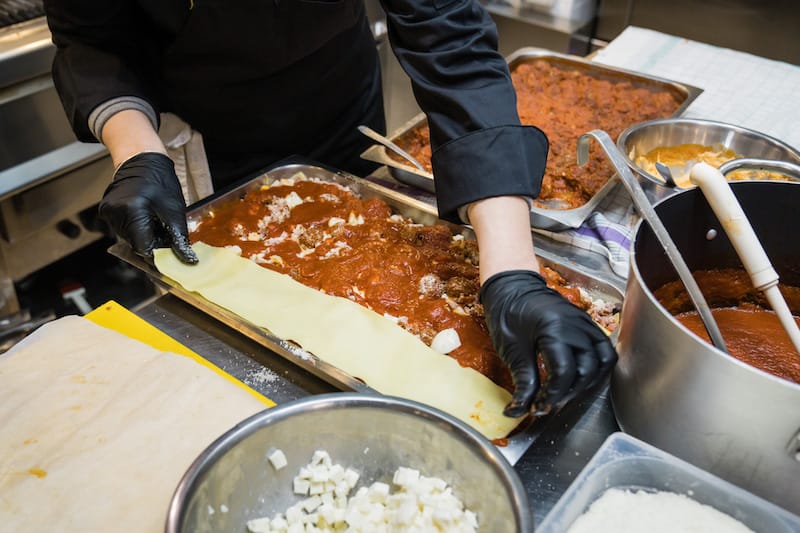
As the name suggests, we are talking about something strictly Neapolitan – not the rich, multilayered pasta dish with origins in Emilia Romagna, so broadly identified as one of Italy’s national culinary emblems. This local version is similar, yet something all its own: forget béchamel sauce and ground meat-based Bolognese sauce; in Neapolitan lasagna, they are replaced by ricotta, sausages and patiently made micro-meatballs (fried, inescapably). Both recipes date back to the Middle Ages, sharing a common origin in the Ancient Rome’s culinary heritage: as a few historical sources attest, including a recipe books from the Angevin Court dating back to 1238, the Neapolitan lasagna slightly predates the northern one, whose first traces are to be found in records from 1282.

Yet, none of these predecessors matches the current recipes, as during that period, a fundamental ingredient had yet to be introduced to Italian kitchens: tomato. The present Neapolitan version probably originated in the 19th century’s noble mansions as a declaration of abundance, perfectly embodying the Carnival spirit. The first official mention is in a cookbook published in 1881 (Il principe dei cuochi o la vera cucina napolitana, “The prince of cooks or the authentic Neapolitan cuisine,” by Francesco Palma), while Francis II of the Two Sicilies, reigning until 1861, was nicknamed “King Lasagna” out of his fondness for the dish. Since then, the recipe knew only a few minor variations, including the use of fior di latte or even buffalo mozzarella instead of smoked provola (to the utter disdain of lasagna purists), and Parmesan instead of Pecorino cheese (only slightly less disapproved).
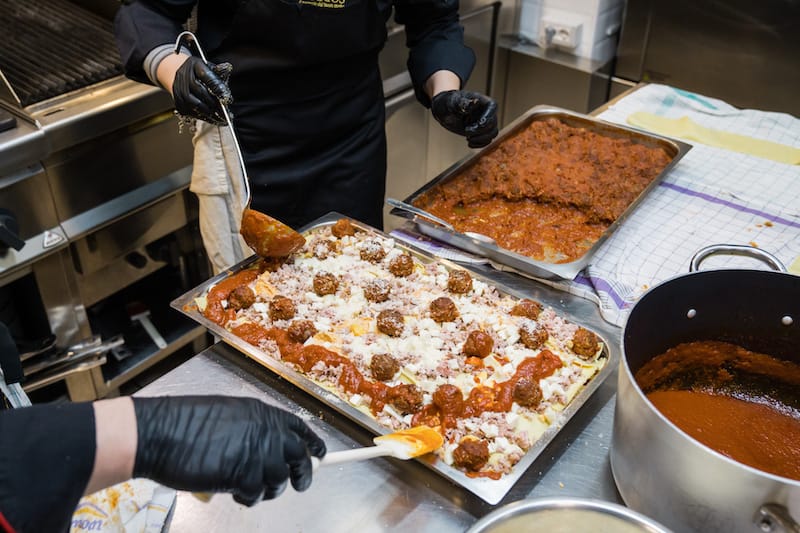
Thus, to this day during Carnival season, Neapolitan lasagna is prepared in homes across the city, respecting the traditions – with the inevitable, subtle differences handed down from one generation to another – and in some restaurants daring to assemble the filling stratification of pasta, sauce, ricotta, meat and more, summing enough calories and satisfaction to make a complete meal.
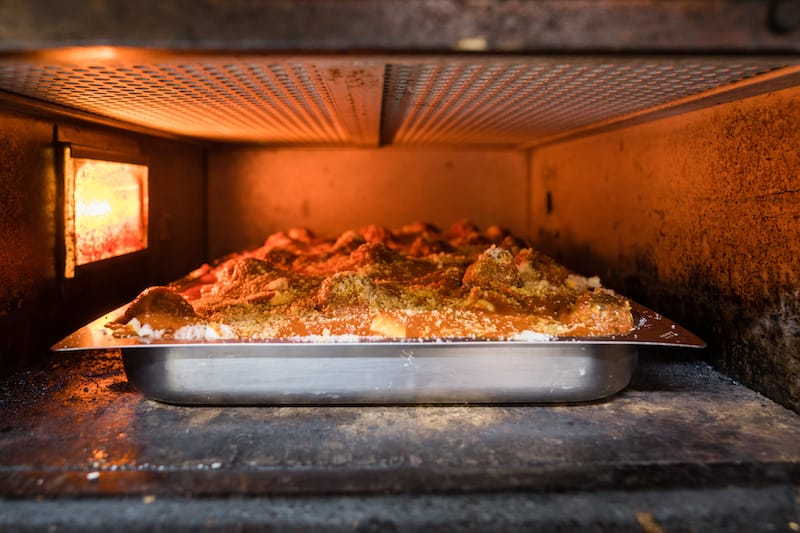
Amongst them is Januarius, which proudly calls itself not only a “Neapolitan” but a “Meridionalist” restaurant, devoted to safeguarding and divulging the local heritage at its best. Nevertheless, owner Francesco Andoli – both a restaurateur and a journalist – opted for a conciliatory solution. “I decided to apply to this recipe my broader approach to life,” Francesco says. “I go totally traditional for the filling, sticking to my family recipe: ricotta cheese, smoked provola, fried meatballs, ragù sauce, yet a bit lighter compared to the intense, long-cooked classic of the Sunday lunch, as this one is made with cervellatine, as we call the long and slender pork sausages, instead of spareribs and other fattier meats. And, we also add thinly sliced salami and sliced hard-boiled eggs. Some people leave them out, but to me, they are essential. The trick is in carefully balancing the right amount of each ingredient, for a pleasant and enjoyable result.”
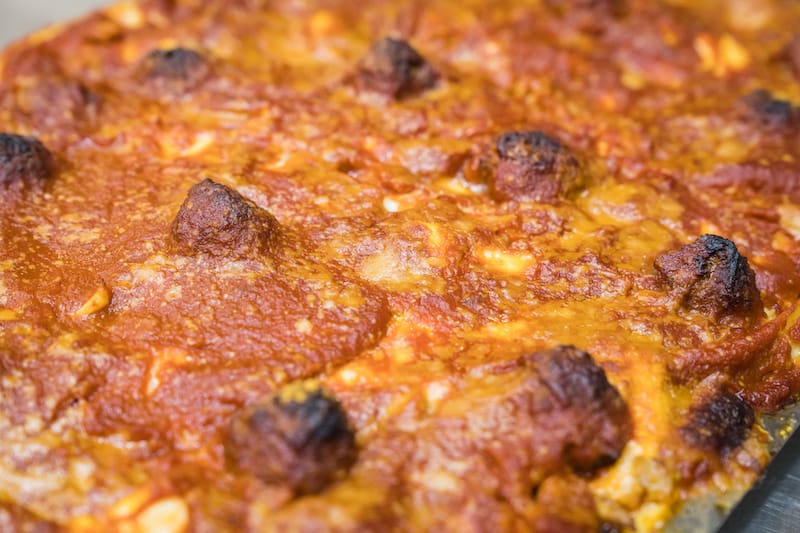
The well-acknowledged food writer Jeanne Carola Francesconi ascribes the latter two additions to the culinary heritage of Pozzuoli, the seaside village close to the city. And while the filling sounds anything but light, Andoli’s compromise relates to the pasta, instead. Neapolitan tradition commands to use durum wheat semolina pasta layers, boiled and drained, with their rough and porous surface and the wavy borders ready to scorch as the lasagna cooks in the oven. “I prefer fresh egg pasta, instead, thinly and carefully stretched: I found its texture lighter and gentler, giving an overall more enjoyable result,” he says. “This is my attempt to pacify the diatribe between Neapolitan and Bolognese tradition. As a journalist, I have to recognize they were smarter than us to promote their recipe and let it to be known all around the world. And I’m particularly fond of making tourists, both foreigners and Italians, aware of our version.”

The choice of egg pasta, shared by many chefs and home cooks, also has practical implications and turns out to be a winner especially when the lasagna – as the local habit goes – is served “riposata:” “This is a perfect recipe to be made in generous amount and consumed for a few days in a row,” explains Andoli. “Actually, it’s even tastier when eaten the day after, as we do at the restaurant: thus, all the ingredients merge in the ideal way and the lasagna itself dries out, getting more compact.”
The only flaw of Neapolitan lasagna, namely Januarius’s version? You have to wait for the single week of the year when Mardi Gras falls to enjoy it. “I’m deeply respectful of culinary timelines,” Andoli says. “I like marking the rhythm of the annual events with seasonal, traditional recipes. I don’t want lasagna to become a ubiquitous touristic dish, like carbonara in Rome.”
This article was originally published on February 20, 2023.
 September 11, 2019 Nurlan
September 11, 2019 Nurlan
During a busy evening on Main Street in Flushing, the sight of a food cart grilling […] Posted in Queens April 24, 2018 Spring Surprises
April 24, 2018 Spring Surprises
It’s no easy task handling a 70-kilo longfin tuna or a 20-kilo corvina. But over the […] Posted in Lisbon August 3, 2018 Cantina del Gallo
August 3, 2018 Cantina del Gallo
We’ve got a thing for small, family-run spots in Naples, particularly those that are […] Posted in Naples
Luciana SquadrilliGianni Cipriano and Sara Smarrazzo
Published on February 05, 2024
Related stories
September 11, 2019
QueensDuring a busy evening on Main Street in Flushing, the sight of a food cart grilling skewers of meat doesn’t seem out of the ordinary on a thoroughfare filled with street vendors. After hanging around long enough, though, it becomes clear that this cart is different from similar ones up the block. The most obvious…
Taste the freshest seafood in Lisbon on our ‘Song of the Sea’ walk!
April 24, 2018
LisbonIt’s no easy task handling a 70-kilo longfin tuna or a 20-kilo corvina. But over the past few weeks, we’ve watched our favorite fishmongers in Lisbon’s Mercado da Ribeira do just that – looking more like weightlifters or wrestlers, they endeavor to fillet the big, fat Atlantic fish that usually make their appearance in April. Even…
August 3, 2018
NaplesWe’ve got a thing for small, family-run spots in Naples, particularly those that are multigenerational. If a restaurant or bakery or producer has been open for at least a century and has always stubbornly stood in the same place, continuity and quality of product are all but guaranteed. Take, for instance, Cantina del Gallo in…







































